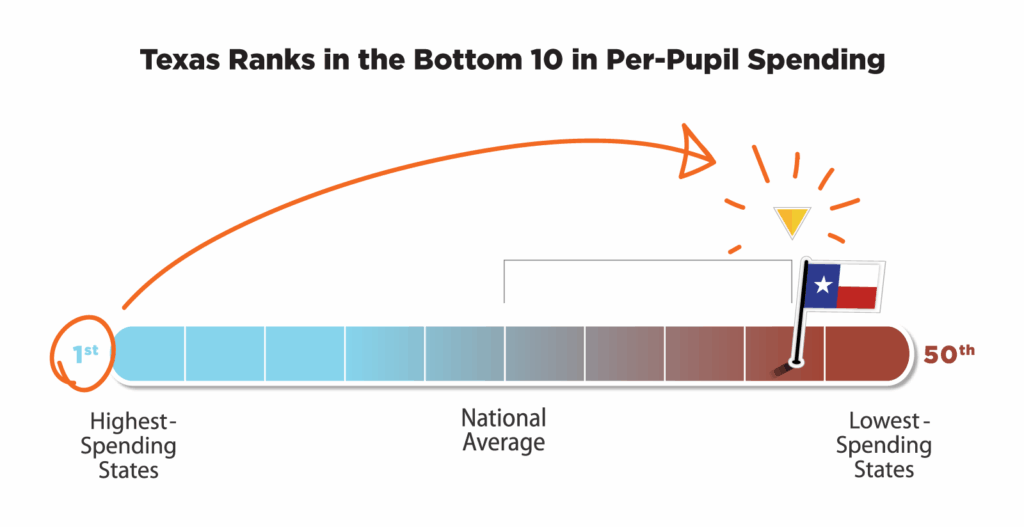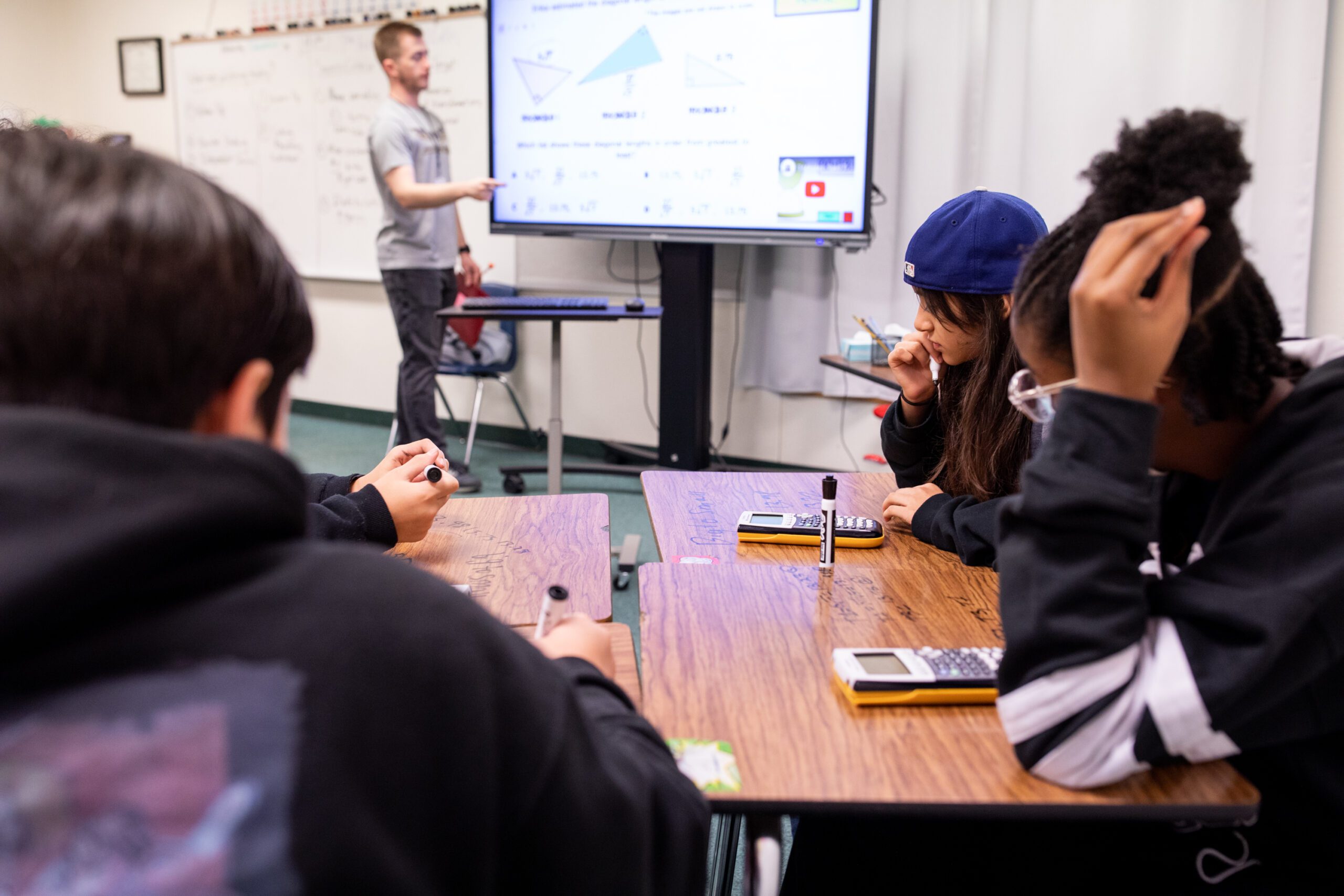
categories
The Ripple Effect of Increasing the Basic Allotment in Texas

October 22, 2025
The Power of the Basic Allotment for Texas Schools

The public education system in Texas is one of the largest in the nation, with more than 1,200 school districts and public charter schools and over 9,000 school campuses. Our schools employ more than 776,000 people—approximately half of whom are teachers—to educate 5.5 million Texas students.
And yet, while we are among the largest and most diverse collection of public schools in the country, we are also one of the lowest funded. Texas ranks in the bottom 10 nationwide for per-student funding, around $4,500 under the national average.
How does the basic allotment help school districts?
The basic allotment does a lot for our school districts, including solving three main challenges in particular and adding one big benefit. Three main challenges — funding teacher pay raises, addressing rising inflation, and reducing recapture—can all be addressed by one school funding solution. The solution is raising the basic allotment.
And when you raise the basic allotment, you also give school districts the flexibility to spend the money received as needed, especially for things like building repairs, transportation, food service, counseling, wage increases, and more.
By increasing the foundational per-student funding element known as the basic allotment (BA), the Texas Legislature can also address three other challenges that are holding our schools back.
School Funding Challenge #1: Funding Teacher Pay Raises
The teacher workforce crisis has been well documented. For the past three years, over three-fourths of Texas teachers have seriously considered leaving the profession, marking the highest levels of teacher dissatisfaction in decades. And 77% of Texas teachers feel they are not paid a living wage.
The Basic Allotment Solution: Current state law requires 30% of any increase to the basic allotment must be used to increase educator pay. Increasing the basic allotment would give all school districts and charter schools additional funding to boost teacher salaries.
School Funding Challenge #2: Addressing Inflation
Rising inflation is one reason why many school districts continue to struggle financially. Many schools across the state are reporting financial crises due to inflation and the rising cost of living in communities across Texas.
The Basic Allotment Solution: By increasing the basic allotment, all public school districts and public charter schools would receive increased funding to offset higher costs. Even better than a simple increase would be if the state commits to a permanent inflationary adjustment, so school districts and the legislature don’t have to revisit the issue every legislative session.
School Funding Challenge #3: Reducing Recapture

The state’s system of recapture (sometimes referred to as Robin Hood) attempts to balance out the vastly different amounts of revenue school districts collect from local property taxes. The state employs a set of funding formulas using local taxes and state aid to determine how much total revenue a school district is allowed. In some instances, local taxes alone exceed the entitlement amount, and the state is allowed to recapture any excess revenue from local taxes.
Because property values in Texas continue to rise in many regions, districts are sending historically high amounts of funding back to the state in recapture payments, and the state is contributing less to the overall funding pool.
The Basic Allotment Solution: When the state contributes more to education funding through the basic allotment, the amount of recapture funding the state collects goes down. This is because raising the basic allotment also raises the entitlement owed to a school district, helping to reduce recapture.
| Basic Allotment Basics |
- The basic allotment (BA) is the amount of funding each school district or charter school receives for each student who attends.
- The BA is the baseline multiplier for many special funding allotments, such as Special Education, Career & Technology (CTE), Bilingual Education, and Gifted & Talented (G/T). When the BA is increased, the funding for each special program is also increased.
- The BA funding amount is set in state law. Currently, the basic allotment is $6,160 per student. It will increase to $6,215 in the 2026-27 school year.
- The BA is not derived from the actual cost of educating a student.
- The higher the BA, the less districts will owe in recapture payments (also known as Robin Hood).



